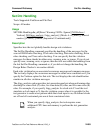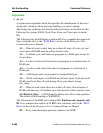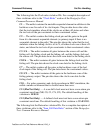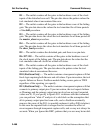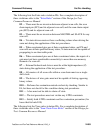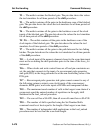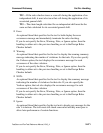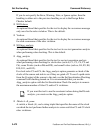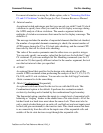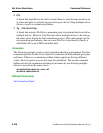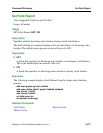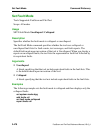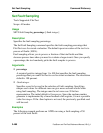
Command Dictionary Set Drc Handling
FastScan and FlexTest Reference Manual, V8.6_4
2-473
For more information on using the -Mode option, refer to “Screening Out False
C3 and C4 Violations” in the Design-for-Test: Common Resources Manual.
• -Interval number
An optional switch and integer pair that you can only use with C3 and C4 clock
violations to specify how often you want the tool to display a message during
the ATPG analysis of those violations. The number argument indicates
multiples of violation occurrences that cause the tool to display a message. The
default is 0.
The message includes the number of sequential elements that the tool checked,
the number of sequential elements remaining to check, the current number of
ATPG passes during the C3 or C4 clock rules checking, and the current CPU
time used by the tool for clock rules checking.
The value of the number parameter must be either zero or a positive integer.
You can only specify one number value that the tool uses for both the C3 and
C4 violations. If you issue multiple Set Drc Handling commands (one for C3
and one for C4) that specify different values for the number argument, the tool
uses the last interval value you specified.
• ATPGC
An optional literal that specifies for the design rules checker to use all the
current ATPG constraints when performing the analysis of the C1, C3, C4, C5,
C6, E10, and E11 rule violations. You can also use the Add Atpg Constraints
-Static command to do the same thing.
• -Mode {Combinational | Sequential}
An optional switch and literal for the tool to use with the E10 rule. The
Combinational option is the default. It performs bus contention mutual-
exclusivity checking and is limited by the combinational logic boundary.
The Sequential option considers the inputs to a single level of sequential cells
behaving as “staging” latches in the enable lines of tri-state drivers. All of the
latches found in a back trace must share the same clock. There must also be
only a single clocked data port on each cell, and both set and reset inputs must
be tied (not pin constrained) to the inactive state. This check ensure that there
is no connectivity from the cells in the input cone of the sequential cells and
enables of the tri-state devices except through the sequential cells.



